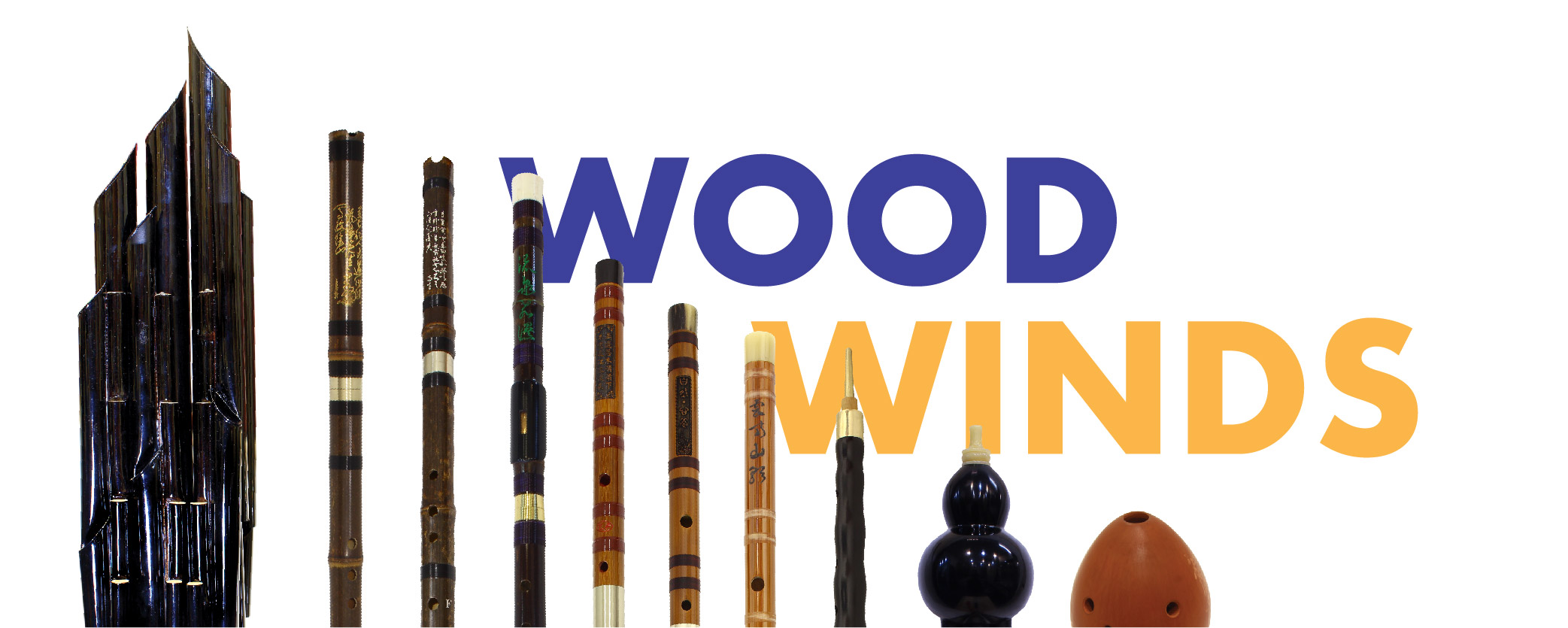
Chui Guan Yue - Chinese Woodwind Instruments
Wind and percussion instruments, generally possessing loud volumes, are a crucial combination in folk music. The sounds produced by wind instruments in the Chinese orchestra are often caused by the vibration of air columns or free beating reeds and are very penetrative. As such, the section is seated at the back of the orchestra.
According to records, in court orchestras of the Zhou Dynasty, instruments were already divided into tang shang yue and tang xia yue, namely the group of stringed instruments (and vocals), and wind and percussion instruments respectively. It was recorded that during performances, tang shang yue instruments would be placed on raised platforms while the tang xia yue instruments would be placed on lower ground. It is obvious that the arrangement was done in consideration to the full orchestra’s sound. Similarly, the modern Chinese orchestra has also placed stringed instruments at the front of the stage while the wind and percussion instruments are placed at the back. This has been an agreed seating arrangement among all orchestras. As to where which stringed instrument is to be placed and where which wind instrument is to be positioned, it is still cause for debate. Wind instruments, can be categorized by the common ways with which they are blown: bianling - through the use of airstreams passing through the holes, instruments of this category include the dizi, xiao and xun haozhu - through the reverberation of lips, instruments of this category include the horn and brass horn epitomize this category huangshe – through the use of a double-reed, instruments of this category include the bawu, suona, guanzi huangguan – through the use of a single reed, instruments of this category include the sheng With a hundred-fold variety of wind instruments in Chinese folk music, wind instruments in the Chinese orchestra have been standardized to the following: dizi, sheng, xun, xiao, suona and guanzi. Occasionally, minority folk instruments like the bawu and koudi are used in sections of Chinese orchestral pieces to introduce a more diverse tonal colour.To learn more about the different types of Chinese woodwind instruments, click on the links below:

